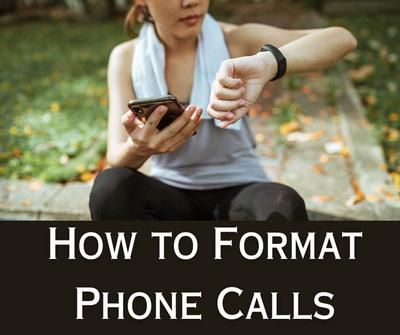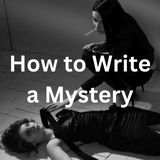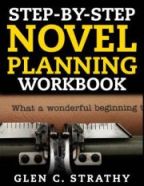How to do a phone conversation?
by Marissa
(Ohio)
Question: In my book there are a couple time when a character is talking on a phone or through an ear piece to someone. How would I do the conversation? Would I just have my character speak and not put the other person's dialogue? or would I have both dialogue because it's from that character's point of view and they're the ones talking to the other person? Would I make it like a normal conversation between two people or would it be written differently? How would I write it?
"where are you?" "On my way"
or?
Person 1: "Where are you?"
Person 2: "On my way"
or?
Person 1: Where are you?
Person 2: On my way
Which version would I do if any of them? If it's not any of those then what would it look like? And again this is for when it's in that characters point of view I know that if it's in another character's point of view you'd only hear the one side of the conversation but I don't know how to do the conversation when it's in the person that's talking on the phones point of view. People tell me read more it will improve your writing and you'd know how to do it but the thing is I think I read a lot more than most people do my age because I'm 17 and most people I know don't just read for fun they only read for school. In any of the books I've read it's either been that it's not from that characters POV that's why I know how to do that but I've never read a book where the character that's telling the story is the one talking on the phone or I just don't remember it in a lot of the books I read they don't use cell phones a lot or at all because they're mostly dystopian or fantasy type ones. So Can you help?
Answer: Assuming you are writing from your main character's point of view (and not an omniscient POV) then you will narrate what the main character perceives. Since the main character hears what the person on the other end of the phone is saying, you would include both characters' dialogue.
The only time you would not include what the person on the other end of the phone says is if the main character is overhearing someone else making a phone call. In that case, the main character would not hear what the person on the other end says, so you could not include it.
The basic guideline is that a paragraph is about what one person does,
Once you have established the speaking order, you can leave out any additional tags. Perhaps use an occasional tag if it's a long passage of dialogue. Obviously, if there are more than two speakers, more tags will be needed.
You can also use action beats in place of tags, or use a combination. Again, because each paragraph is about what one person does, all the action in a paragraph is assumed to be performed by the same person. So if you have a character do something, and then there is some speech, we assume the person speaking is the same person who does the action.
For example...
With tags:
"Where are you?" I said.
"On my way," said Mary.
"You know I can't wait for you."
"Stay put. Or else."
With beats:
I looked up and down the footpath. "Where are you?"
"On my way." Mary was breathing heavily. I could hear her rapid footsteps in the background.
"You know I can't wait for you."
"Stay put. Or else."
I stayed.
You will sometimes see dialogue with no quotation marks, but usually only in literary fiction. Some authors believe quotation marks are distracting and that leaving them out makes it easier for the reader to listen to what the characters are saying. Of course, the trade off is that the reader must work harder to figure out what is dialogue and what is narration. Also, most readers are used to quotation marks. Whichever choice you make, you must be consistent throughout the book.
Hope that helps.
P.S. Reading a lot and writing a lot are two methods writers have used throughout history to train themselves. So are memorizing great poems and speeches, copying out great stories by hand, and doing your own analyses of great plots.
However, these methods involve a lot of "trial and error" learning.
Just as you can master spelling, grammar, and punctuation much faster by learning the rules, you can speed up your ability to write stories by learning story theory.
It's just that not many people who aren't writers learn story theory. It certainly isn't taught in most English classes.
In fact, some writers don't learn story theory either, and instead rely on their years of trial and error self-teaching.
The aim of this site is to shorten the learning curve by making story theory more easily accessible. For simpler matters, such as punctuation, you might also acquire a style guide.
But I digress.
Comments for How to do a phone conversation?
|
||
|
||
|
||
|
||
|
||
|
||
|
||
|
||
Ist person phone-call format
by Steve Hawe
(Lonreach, Queensland, Australia)
Question:
Like Marrisa from Ohio, I also have a question about phone-call format. My story is also first person narration. Not all phone calls are one way. The ones that are (three) I'm happy with, and am confident that the reader, after becoming familiar with the characters and the way they interact with the 'heard' voice on the line, will hear in their mind the silent replies.
So, how to do it? As of now, I have a dotted gap which looks messy. What are my options?
Thanks so much for being available, Steve from Longreach, Australia.
Answer:
It's really no different than narrating any three-person conversation.
1.You will likely need speech tags to identify the speakers (e.g. "Dave said,..."). In a three-person conversation, you don't want your reader to get confused about who is speaking. Also, it's a little trickier to use action beats to indicate who is speaking.
2. With first person narration, you describe whatever the main character perceives, but only what the main character perceives. For example, in a cellphone conversation, you can describe what the main character is doing or seeing and what he hears over the phone, because that is all stuff the main character is aware of. But you cannot narrate what the other characters are doing or seeing, because that is outside the main character's awareness.
3. You can end a spoken line with an elipsis ("...") if the person speaking trails off mid-sentence, or is cut off, or interrupted by someone else. Otherwise, end with a period.
4. Change paragraphs each time a new character starts speaking.
5. I'm not quite sure what you mean by "silent replies," but if the main character is imagining or guessing how the person on the other end of the phone call is responding, you can include that in the narration, just like you would any other thought in the main character's mind. Again, you can only describe what the main character thinks or perceives. (How accurate this perception will be is questionable.) If there is a gap in the conversation, you can state this, because that is something the main character will notice.
Best of luck.
Novel Writing phone conversation
Question: I am currently writing a dual pov novel with 2MMC's A and B
my question is how to write the following
1.phone conversation between A with an off screen 3rd person(C) in B's POV chapter
2. phone conversation between A with an off screen 3rd person(C) in A's POV chapter
Answer: Okay, one at a time...
"1.phone conversation between A with an off screen 3rd person(C) in B's POV chapter."
Since you are writing from B's POV, you can only describe what B perceives. I presume B is watching and listening to A as A makes a phone call? If so, B would not hear anything C says, so that must be omitted (unless C is on a speaker). Otherwise, B might infer what the conversation is about based on what A says, but could not know for sure.
If B is not present while A makes the phone call, then you cannot include the phone call at all. (Perhaps you can have A tell B about it later.)
Bottom line: just describe what B sees and hears.
"2. phone conversation between A with an off screen 3rd person(C) in A's POV chapter"
Since, in this case, you are writing from A's perspective, you would describe what A perceives. A can hear what C says, so that can be included, just like in any dialogue between two characters where one character is the POV character.
Clear?
- Home
- Writing Questions
- Novel Writing phone conversation
















